


Janus Metz: Armadillo på filmstriben.dk
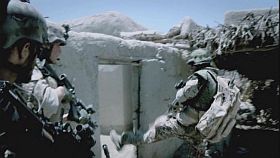
A film blog by Allan Berg Nielsen & Tue Steen Müller



A film blog by Allan Berg Nielsen & Tue Steen Müller

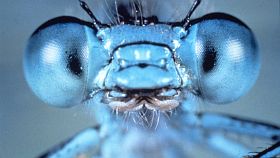
At tænke sig: Dette kan ses! Som det hedder i den aldeles beherskede speak, kræver det imidlertid at nærme sig denne verden med den yderste tålmodighed. Filmen er ren tålmodig venten på, at det sker. Og det sker! I scene efter scene folder denne mig ukendte verden sig ud, vildt forbavsende og fuld af blid og brutal og grusom skønhed. Det er en vidunderlig film.
Vi er i insekternes verden, nede i øjenhøjde, i den verdens landskab og skala, en enkelt gang endog inde i myrernes pov (så lidt som noget andet i denne film overdrives dette greb), kun enkelte optagelser fra vor verdens landskab orienterer os, før vi atter forsvinder ned til macrooptikkens scener af mesterligt kameraarbejde: edderkoppens indpakning af sin fangst med rædselsvækkende elegance, myrernes slæbearbejde med byggematerialer i en for os uoverskuelig logistik, en blank skinnende skarabæ triller en mange gange den større gødningkugle af sted til sit forråd, er uheldig, triller den fast på en grenspids. Billen undersøger sagen, afprøver forskellige muligheder, lykkes til sidst ved fra modsatte side at sætte skuldrene imod kæmpekuglen. Aldrig glemmer man dette dyrs ihærdige og intelligente indsats. Musikken er både en hyldest til fotografiet og en kongenial medtolkning, lyrisk, når to vinbjergsnegles langsomt prøvende berøringer af hinanden før parringen ved musikken bliver til operahøjdepunkt, når et tusindbens beslutsomme fremfærd ved trommespillerens diskrete rytme bliver til et tog gennem dalen, til mild humor. Det er så pragtfuldt og stort, hvad Dokumania-redaktionen bringer ind i min stue.
Claude Nuridsany og Marie Pérennov: Microcosmos – Le peuple de l’herbe, Frankrig, 1996. Sendt i Dokumania på DR2 i går. Tidligere sendt 4. januar. Forhåbentlig har DR2 rettigheder til et par visninger mere. Og Carsten Olsen: køb den til Filmstriben, den er en evig klassiker, denne generations Bæverdalen, mindst! (Min kollega Tue Steen Müller gør dog i den forbindelse opmærksom på, at filmen i sin fulde længde pt. kan ses på Dokumanias hjemmeside, at en dansk version på dvd er til at købe og har været det længe. En vhs-kopi eller måske dvd befinder sig i samlingen på Videoteket i Filmhuset, København og kan ses der. En fransk version på dvd kan lånes på biblioteket.) Claude Nuridsany og Marie Pérennov filmografi: Microcosmos, 1996, Genesis, 2004.
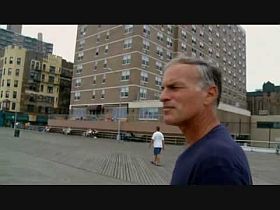
Jeg vil slutte mig til Ekkos efterlysning i går af denne vigtige film. Arne Notkin vil ikke vise filmen på DR2 lige nu, skønt DR har været med til at finansiere den. Det samme har DFI, men derfra holder man den ikke tilbage, meddeler Claus Ladegaard, så det er ikke nogen koordineret afvisning. Efter Nationalfilmografien er filmen da også på filmstriben.dk. Det samme meddeler bibliotek.dk, men, men det viser sig, at på filmstriben.dk er den faktisk kun tilgængelig for skoler med særlig kode og adgang. Nu, hvor vi er i kontakt med Carsten Olsen på DFI (se hans bemærkning i højre spalte), må jeg spørge ham, om han ikke godt vil gøre filmen tilgængelig på Filmstriben for os almindelige bibliotekslånere også? Nu vi for alvor er blevet nysgerrige. Hvad vi venter på, kan man se et veloplagt klip med den kontroversielle Norman Finkelstein (FOTO) illustrere på You Tube.
Så godt som muligt i min position har jeg fulgt Yoav Shamir fra hans Checkpoint (2003), som imponerede mig og berørte mig dybt til Flipping Out (2007), som skuffede mig en del. Det har jeg skrevet om her på siden. Også på den baggrund er jeg spændt på Defamation (2009), der tilsyneladende kaster lys over hele Shamirs filmiske metode og kritiske værk, som i den grad bør være tilgængeligt i dansk version. Som værk. Som DR2’s Israel serie også omtalt i Ekkos artikel.

Lad os gøre lidt reklame for DR K, Danmarks Radio digitale kulturkanal. Som ser ud til at være ved at finde sin programprofil. I går aftes så jeg – se nedenfor – Stan Neumanns film fra 2009 om det surrealistiske fotografi, som genudsendes flere gange, hvilket mange af dokumentarprogrammerne og – filmene gør. Bagefter så jeg en glimrende hollandsk dokumentar om Sarkozys planer om et Grand Paris.
På vej er en fin dokumentar om Wallenberg-familien, i to dele, og på søndag aften kan ses et gedigent portræt af den polske filmkomponist Krzysztof Komeda. Omtalt på dette site.
En del kan også ses på site’t, bl.a. professor Ib Bondebjergs forelæsninger om tre dokumentarister, radioens Christian Kryger og tv-mestrene Poul Martinsen og Lars Engels.
… ikke at forglemme de mange gode spillefilm, som kanalen sender. Nu er der en kavalkade på vej med Charlotte Rampling, bl.a. vises Natportieren, hvor hun spiller mesterligt op til Dirk Bogarde.
Hjemmesiden er i øvrigt forbilledlig klar og attraktiv, se selv.
Foto: På plakaten ses den svenske skuespiller Per Oskarsson i hovedrollen i Henning Carlsens “Sult”. Æret være hans minde.

The Czech born, based in Paris, director Stan Neumann is a real auteur, who has been working a lot for the French-German cultural channel arte as one of the directors trusted by Thierry Garrel, when he was leading the arte Unité Documentaire. Neumann made two masterpieces, ”Language does not Lie” and ”A House in Prague” (the first one written about on this site) but apart from that he has been behind a huge series on Architecture and he has made a lot of documentaries for the television channel on visual arts.
One of them is a 2009 production on the surrealistic photography made in cooperation with the Centre Pompidou in Paris. It is one of those playful visual lectures that with an excellent commentary introduces you to not only the famous surrealists Man Ray (Photo of the legendary Kiki de Montparnasse), Salvador Dali and André Breton, but also to Dora Maar and Alvarez Bravo. You are entertained and informed, well you learn something when Neumann puts one photo after the other to our vision and manipulates the framing to make us wiser.
I watched it on the Danish digital channel for culture dr K.
France, 26 mins.
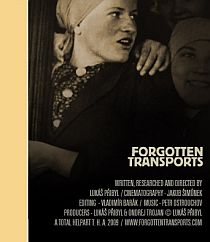
The Czech Embassy has asked filmkommentaren.dk to announce the screening of one part of the extraordinary documentary series by Lukas Pribyl, previously praised on this site. We do so with pleasure by re-posting the review from 2009 below.
The screening of the film Forgotten Transports to Estonia takes place in Husets Biograf in Copenhagen January 26. The screening is one of many events in connection with the Danish Auschwitz-Day (January 27 – the day in 1945 where Auschwitz was liberated by Soviet troops).
More information about the screening: Consulate_Copenhagen@mzv.cz
The review: What an achievement! I don’t recall, when was the last time that I witnessed so captivating a historical documentary, here told by Czech Jewish survivors of the holocaust. They were interviewed between 2000-2006 by Lukas Pribyl, the researcher, writer and director behind the four 90 minutes long films that share the same title, ”Forgotten Transports”, with the adding of where the transports went: ”to Latvia”, ”to Estonia”, ”to Belarus”, ”to Poland”. (The photo represents the “Estonian “Czech Girls”” in “to Estonia”).
Put together in a clearly edited non-sensationalistic chronological structure each of the four films takes the viewer on a journey from Czekoslovakia to the ghettos in the countries mentioned and from there to camps – concentration camps, extermination camps. Or to be more precise: the survivors take the viewer with their personal stories, told with shocking and moving details, but also with humour. Watching the film you wonder how it was possible for these people to continue living after they (most of them) lost their families and were so close to the most horrifying brutality and death in circumstances beyond description.
But the film director does so in a way that deserves all respect. All archive material – moving or still images, much of it I guess shown for the first time – are connected to the places, events and time that the storytellers refer to. Discreetly a text is placed in the frame giving the information of name of person talking, or the place we are taken to. With the addition of private photos of the survivors as young people, as well as the killed relatives or friends, or the German SS people and camp superiors. This is not a film about the 2nd WW, there is not a single word from Hitler, there is not a single reconstruction, it is totally based on what human beings remember from their childhood and youth. Put together in four films that are different as their fates were different, some timesvery hard to watch and listen to, some times you smile. It is about Czech Jews but the stories have an universal appeal.
The musical score also deserves a mention for its high quality. Peter Ostrouchov avoids all film music klichés and pushes for sentimentality, for me his music places the viewer in a state of reflection.
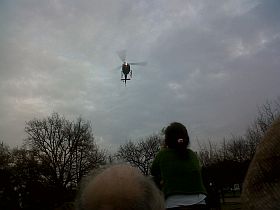
DocsBarcelona (February 1-6) is under preparation. But today the staff is not working. Last night Executive Producer Elena Subirà I Roca explained in three filmic scenes how Nit de Reis is performed in Catalunya, and she sent a cell phone photo of the arrival of the Three Wise Men
Tonight is Magic! Excitement all over. Kids not being able to sleep after saluting and seeing the three wise men with all their charm and luxury arround! In St. Cugat, where I come from, they arrive in a helicopter and jump to their carriages! There are real camels!!!!
Parents leaving out glasses of champagne and sweets in the sitting room for the three men to have something to eat when they come in with the presents, and water and bread crumbs for the camels so they can recocver from exhaustion.
Tomorrow morning: empty glasses, no sweets or crumbs left and loads of presents under the tree!! And a tour to all the family houses to pick even more presents!
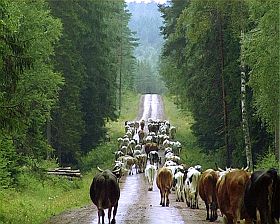
Tue Steen Müller and Allan Berg, the bloggers of this filmkommentaren.dk met during the holidays and agreed to make a list of films that have stayed in our minds. We have picked films that have been reviewed or noted on this site during 2010. Here follow the titles in alphabetical order, with a smart-link that will bring you to the longer text. We wish our readers a Happy New Year.
We remember
.. the tiny light changes in the photos of the prisoners, the refined sound design, the almost imperceptible camera movements, a characterisation of anger and dignity at the same time
.. a character driven, informative and creative investigation into the conflict between man and nature, between business and environment, between profit and social security
.. the uncovering of the professionalised, raw and brutal internal jargon, the culture of soldiers in battle
.. the close-up conversations between patients, the human ability to find beauty in difficult moments
.. the slow blocking of an apartment window for building of a wall, the leaving of a happy family time, the impossible peace between Israelis and Palestinians
.. the eyes of the many naked women, their gazes, which all mirror the memory of a fine lover, female erotica
.. two men in an apartment in Paris, trying to get rid of furniture and clothes from a time that is no longer there, preparing for the final farewell
.. maybe THE biggest of them all, sitting old and mentally confused on his hospital bed watching football on television, it’s over
.. the small child on a chair in a Russian kitchen reciting Pushkin, the soul of Russia
Way of Nature (PHOTO)
.. a farmer sleeping on his couch with a dog on his belly, radio report from Israeli bombing of Lebanon, harmony and no disturbance from outside world

The website of the 7th European Feature Documentary Film Festival is up and running. You can now see what films have been selected by Svetlana and Zoran Popovic, and me, to be screened from January 25 to 29 at the Sava Center in Belgrade. With the presence, in most cases, of the director.
Opening film is by the master Nicolas Philibert, ”Nenette” (PHOTO), followed by ”Blood in the Mobile” by Frank Piasecki Poulsen, who is the first director to be invited to M7 for the second time, ”Guerilla Girl” being the first to be shown in Belgrade. ”48” is the masterpiece by Susana de Sousa Dias, after that comes the essay by film critic and director Mark Cousins ”The First Movie”, the serious comedy ”Men Who Swim” by Dylan Williams, the beautiful music and dance film by Gasnier and Nezan ”Zanzibar Musical Club” and finally Serbian premiere of ”Cinema Komunisto” by Mila Turajlic.
I have on filmkommentaren.dk year after year praised the festival and its mini format and called it a personal highlight to sit in a cinema and watch a documentary together with 1200 other people. It is indeed, so if you have time and can afford a travel to exciting Belgrade and experience a unique hospitality and atmosphere… GO.
If you are a young filmmaker you can join the workshop that takes place every day. All invited filmmakers meet young colleagues to tell about their way of filmmaking. Two intense hours with the possibility of putting questions and getting answers.
It is all an hommage to documentary filmmaking. Below you can read my welcome words published on the website.
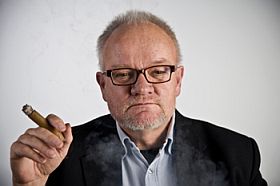
Welcome to this special edition number seven! Did we really have 7 editions, that means 49 films including those of this year. Wow… And we have had almost full houses in the Sava Centre during most of the years! And wherever I go and meet filmmakers who have been here, they remember with smiling eyes how it was to be at the festival in an atmosphere full of generosity and the chance to meet colleagues and have some intense moments together. For one who is a frequent flyer to events all over – to come to Belgrade every year is pure pleasure.
As it is to take part in the selection process. From going to the post office in Copenhagen with some dvd’s in an envelope, have them sent to Belgrade and wait for the reaction from the Magnificent7 Head Quarter resided at the Popovic’s. The responses are always very polite and nice, but also precise and analytical and critical, and always with a fine humanistic approach to the films.
7 is a magic number. I googled it to find inspiration for this text…. seven days in a week, seven deadly sins, seven virtues, the meaning of the number in different religions and so on. And a mention of “The Seven Samurai”, the film of Kurosawa, the director who also made “Rashomon” where the same event/thing/story is told from different angles.
Maybe this is what we have been doing at Magnificent7 festival? Basically we have told the same Story in 49 films about Life and Death, Joy and Sorrow, Love, Happiness – about the human condition of today. Told from different angles, filtered through different temperaments. That is what documentaries can do, right?
Enjoy the 7M7!
Tue Steen Müller
Copenhagen, December 2010
Photo: Me in October in Belgrade, a still taken in connection with a film shot by Andrijana Stojkovic, “The Box”, where she needed someone to play a Danish diplomat!